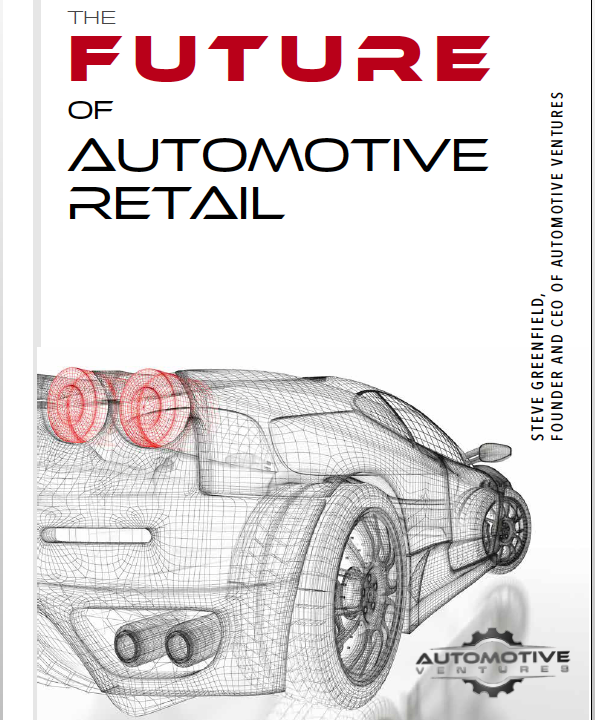Welcome to another edition of The Future of Automotive, with Steve Greenfield, Founder, and CEO of Automotive Ventures, where we put recent automotive and mobility news items into context, in terms of the broader thematic areas that will potentially impact the industry.
I’m glad that you could join us.
On this week’s episode, I want to dig into how Tesla is wielding their industry-leading profit margins as a weapon to dramatically drop vehicle prices, and we explore the downstream effect this will have on both the legacy automakers and the overall industry.
So let’s get started.
Tesla revs up EV price war
As reported on one of our previous segments, Tesla’s profit margins are significantly higher than its rivals, both in terms of gross and net profit.
The simple truth is that Tesla earns far more money for every vehicle it sells than any of its global rivals.
For example, Tesla earned over $15k in gross profit per vehicle in the third quarter of 2022 – more than twice as much as Volkswagen, four times the comparable figure at Toyota, and five times more than Ford.
How is Tesla able to build such strong profit margins into their business model?
Tesla has been manically focused on vertically integrating their supply chain and taking out costs.
And the company’s cost-cutting is expected to continue.
At Tesla’s recent Investor Day, CEO Elon Musk told shareholders that Tesla expects to cut existing manufacturing costs in half, partially through an updated set of manufacturing processes, AND through its next-generation vehicle platform planned for production at Giga Mexico.
Musk has for years teased the world with his dream of an affordable electric car. However, Musk said last year he shelved the plan for a $25,000 car, known as Model 2, and he hasn’t mastered the new battery technology that he has stated would be crucial to produce the cheap vehicle model.
A little less believable at this recent investor conference was the announcement that in the next decade, Tesla hopes to reach an annual production capacity of 20 million units, far higher than the 1.3 million sold in 2022.
But, I believe that expanding into the mass market with a dramatically lower-priced vehicle will be critical to meeting Tesla’s goal to increase vehicle deliveries 15-fold – to 20 million – by 2030.
That scale of production, if it is ever able to be achieved, would help Tesla unlock vehicles with sub-$30,000 sticker prices, comparable to a traditional gas car such as the Toyota Corolla. Additionally, this would greatly help increase mainstream electric vehicle adoption, as more and more consumers would be able to afford the lower priced Tesla models.
How have the legacy automakers responded to Tesla’s dramatically higher profit margins?
Ford CEO Jim Farley has noted that Ford needs to cut $2,000 a vehicle out of selling and distribution costs to be competitive with Tesla and other EV startups that sell directly to customers.
And they should be concerned.
Tesla is able to use their superior profitability as a weapon in an EV price war that may have just begun.
In the United States, where federal subsidies have recently boosted EV sales only modestly, Tesla has cut car prices six times so far this year, which has dragged on their margins.
And, just this week, immediately before announcing Q1 2023 earnings, Tesla once again cut prices.
As a result of these aggressive price cuts, the company’s margins are coming back down to earth, although they’re still higher than those of their competitors.
Tesla’s price cuts combined with rising costs eroded its gross margin on cars from just below 30% to a little over 18% in the past 12 months.
Tesla said its operating margin was 11.4 percent in the three-month period, down from 16 percent last quarter and 19.2 percent a year earlier.
Free cash flow for the company has fallen 80% year over year.
So why is Tesla continuing to drop prices so aggressively?
Aggressive price cuts are meant to both spur demand in a sagging economy and fend off rising competition.
We’ve mentioned before on this segment that we’re expected to see more than 150 new EV models hit the market over the next two years. Tesla is sending a warning shot across the bows of the legacy automakers that they are comfortable eroding their profit margins to keep their vehicles VERY competitive vs. these new entrants’ offerings.
How would you be feeling right now if you were GM or Ford, on the cusp of launching a slew of new EV models, knowing that Tesla was willing to drop prices so dramatically?
Tesla is playing a combination of both offense and defense. They DO have an aging model lineup – remember that the Model S essentially hasn’t changed now in 11 years – and they are about to face serious competition with the onslaught of new EV models that are going to be coming to market over the next two years by the legacy automakers.
Even before pricing competition, many EV competitors like Rivian and Lucid are already struggling to turn a profit, and we recently saw that Ford’s EV division, Named Ford Model e, is expected to lose $3 billion this year alone.
Finally, in addition to these dramatic price cuts, Tesla is one of the main beneficiaries of the new federal EV tax incentive of up to $7,500 per vehicle.
Remember that under the previous version of the incentive, Tesla lost eligibility in 2020 after reaching its quota of 200,000 vehicles.
The U.S. Treasury just released an updated list of vehicles that qualify for the new EV incentive, which requires North American vehicle assembly and battery sourcing from the U.S. or its free-trade partners.
Tesla’s Model Y qualifies at $7,500 for all versions under last year’s Inflation Reduction Act, while the base Model 3 sedan only qualifies for $3,750 because it uses cells from China. The Model 3 Performance trim qualifies at $7,500 because it uses locally sourced cells from Panasonic. Tesla’s Model S sedan and Model X crossover don’t qualify at all because their sticker prices exceed the new rule’s price caps.
Tesla has the profit margins to be a VERY annoying fly in the ointment to many of the legacy automakers’ EV strategies over the coming years.
Companies To Watch
Every week we highlight interesting companies in the automotive technology space to keep an eye on. If you read my monthly industry Intel Report, which you can subscribe to for free, I showcase a few companies each month, and we take the opportunity here on this segment to share some of those companies each week with you.
Today, we have two companies to watch: Ocra and Titan Advanced Energy Solutions.
Ocra
Ocra is a centralized management platform – one single place for parking operators to log in to conduct all of their tasks.
Ocra reduces the amount of time it takes to manage current sales channels and makes it painless to scale with new ones so that you can sell more parking spots for higher yield.
The reason that I love Ocra is that they help parking operators maximize yield of their assets by breaking down data silos and synchronizing their consumer demand channels.
You can check out Ocra at www.GetOCRA.com.
Titan Advanced Energy Solutions
Titan uses ultrasound on lithium-ion batteries, to provide intelligence on any battery’s state of health, capacity and state of charge—at any stage of its life—in real time.
They provide all of this in a matter of seconds versus hours.
This gives manufacturers, EV and consumer electronics companies, maintenance professionals, second-life integrators and recyclers a powerful tool for battery management.
The reason that I love Titan is that by using advanced signal processing and machine learning, they can observe the degradation of Lithium Ion batteries on a cycle-by-cycle basis, giving insight to EV manufacturers and battery manufacturers on how to maximize the capacity, longevity and safety of their batteries and battery-powered products.
You can check out Titan Advanced Energy Solutions at www.TitanAES.com.


If you’re an AutoTech entrepreneur working on a solution that helps car dealerships, we want to hear from you. We are actively investing out of our new DealerFund.
If you’re a dealer who wants to invest in early-stage AutoTech companies that benefit your business, let me know. We are still accepting new investors into the DealerFund.
If you’re interested in joining our Investment Club to make direct investments into AutoTech and Mobility startups with small checks, join the Club. There is no obligation to start seeing our deal flow.
And don’t forget to check out my book, The Future of Automotive Retail, on Amazon.com.
Thank you for tuning into CBT News for this week’s Future of Automotive segment, and we’ll see you next week!



